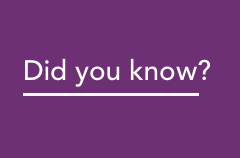TasNetworks has published the Project Assessment Conclusions Report (PACR) to address system strength requirements in Tasmania from 2 December 2025. Publication of this PACR represents the final step in the Regulatory Investment Test for Transmission (RIT-T) process.
System strength is a general term encapsulating a number of specific technical issues. Maintaining adequate levels of system strength across the network is important for ensuring the power system can operate normally, especially following a fault.
The requirements for system strength can be significantly impacted by the connection of new wind and solar generators to the network. The way these technologies currently interact with and support the power system is fundamentally different to that of traditional synchronous generators, such as hydro machines.
With significant new wind and solar generation expected to connect in the foreseeable future, there is an increasing exposure to operating conditions whereby synchronous generation is not required to be online other than to provide essential security services.
As the System Strength Service Provider for Tasmania, TasNetworks is required to take action to plan, procure and make available system strength services as set out in the Australian Energy Market Operator’s (AEMO’s) annual System Strength Reports.
TasNetworks commenced the System Strength RIT-T in August 2023 with publication of a Project Specification Consultation Report (PSCR). Then, in November 2024, the Project Assessment Draft Report set out TasNetworks’ assessment of options to meet the system strength requirement in Tasmania from 2 December 2025 to 2029 and identified a preferred solution.
TasNetworks has now released the PACR, which concludes the RIT-T process. A copy of the PACR can be obtained from either the TasNetworks website or by emailing our regulation team via regulation@tasnetworks.com.au.
TasNetworks welcomes submissions on the PACR and the preferred solution presented.
Submissions should be addressed to Gemma Hutchison, Acting Leader Regulation and emailed to regulation@tasnetworks.com.au.
-
AEMO manages the day-to-day operations of a number of electricity and gas markets and information services, as well as providing strategic forecasting and planning advice.

-
AEMO has strategic partnerships with institutions and energy brands across Australia and globally, including the Bureau of Meteorology (BOM) and CSIRO.

-
In addition to regular consultations, AEMO runs regular working groups and forums that allow energy stakeholders to discuss issues and share information.

-
The Library captures procedures, guides and major reports that live elsewhere on the site.

-
Australia’s energy system has a governance structure that includes AEMO, the Australian Energy Regulator (AER), the Australian Energy Market Commission (AEMC), the Energy Security Board (ESB) and the Council of Australian Governments (COAG) Energy Council.

-
AEMO is an independent organisation that operates on a user-pays cost-recovery basis, with all operating costs recovered through fees paid by industry participants. Our ownership is shared between government and industry.

